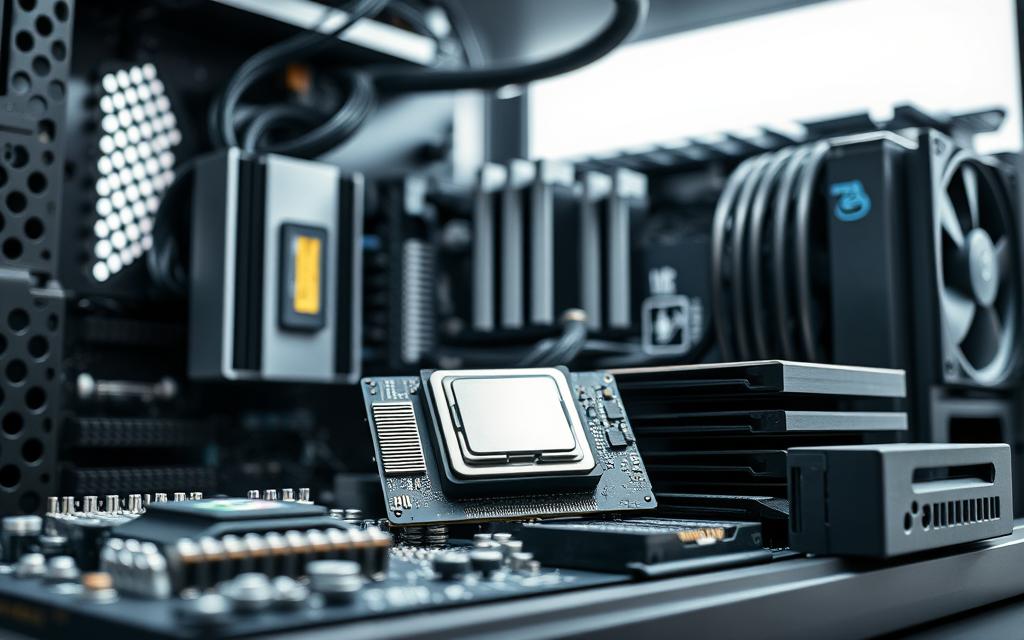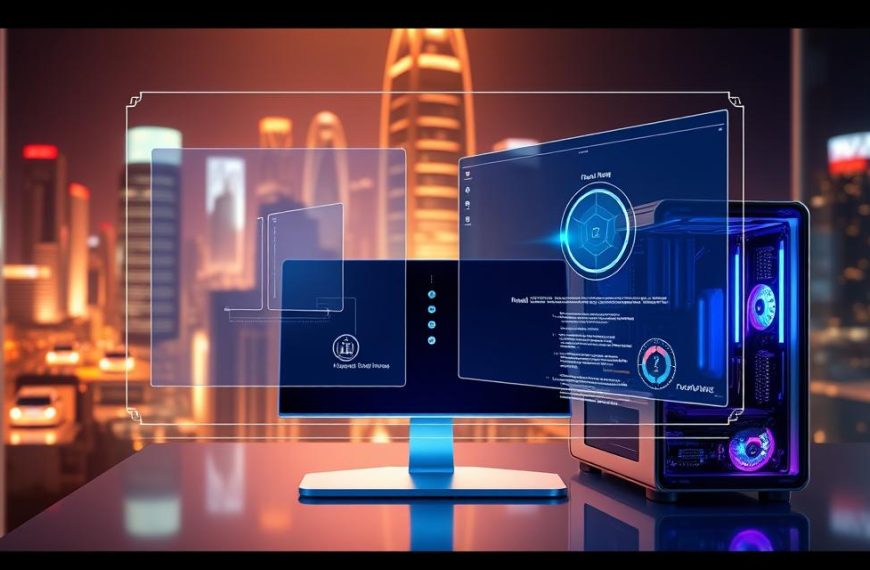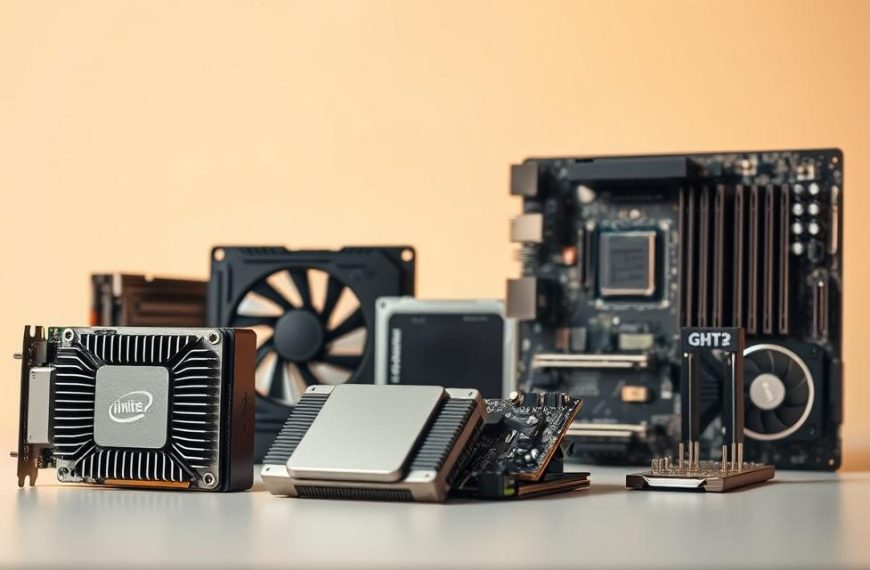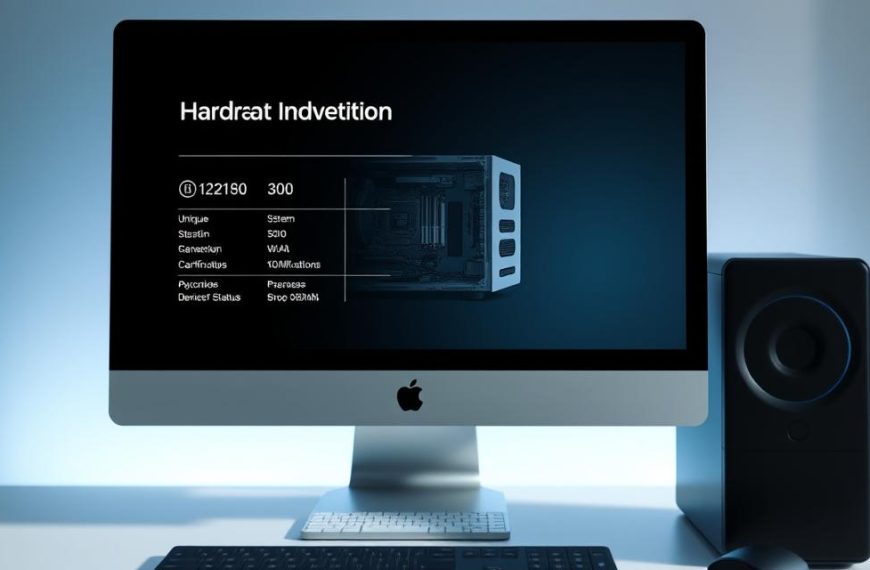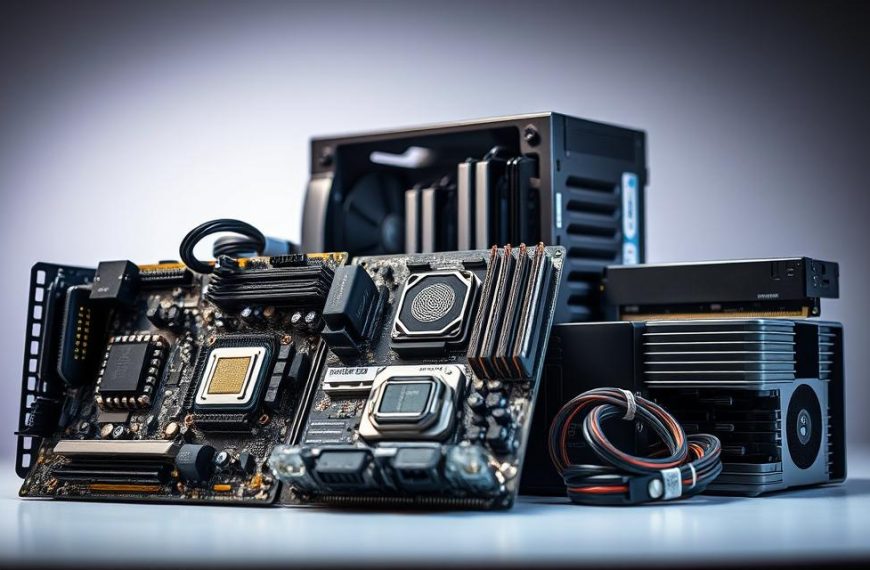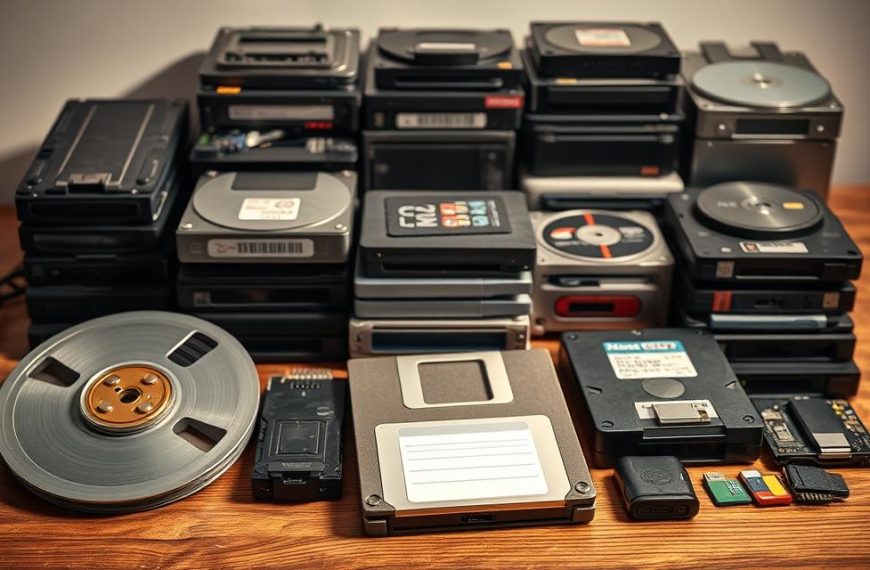Computers have become vital tools in our daily lives. They’re essential for work, education, communication, and entertainment. Knowing the basic computer parts helps you navigate the digital world better.
A computer system typically has five main elements. These are the computer case, monitor, keyboard, mouse, and power cord. Each part plays a crucial role in how we use technology.
Modern computers come in various shapes and sizes. Desktop computers offer different case designs. These include flat desktop cases, tall tower cases, and all-in-one models.
Technology has greatly improved computer hardware over time. Monitors have changed from bulky CRT displays to slim LCD and LED screens. These new screens are clearer and use less energy.
Input devices like keyboards and mice have also improved. They’re now more comfortable to use and respond faster. This makes using computers a better experience for everyone.
Understanding computer parts is useful for everyone. It helps you make smart choices when buying tech. It also gives you insight into how these amazing machines work.
Understanding Computer Architecture and Its Importance
Computer architecture is the blueprint for how computing systems work. It defines the design of hardware components that process information efficiently. This fundamental concept shapes how digital devices operate.
Computer architecture is crucial for system performance. It influences computing efficiency across various technological domains. Its impact reaches far beyond simple hardware configuration.
Defining Computer Architecture
Computer architecture is the framework for data processing in computer systems. It determines how information is stored and communicated. Key elements include CPU design, memory hierarchy, and input/output systems.
- Central Processing Unit (CPU) design
- Memory hierarchy
- Input/output systems
- Instruction set architectures
The Role in Modern Computing
Modern computing heavily relies on computer architecture principles. Professionals use architectural insights to boost system performance. These principles help develop innovative technological solutions across multiple sectors.
| Architecture Type | Key Characteristics | Performance Impact |
|---|---|---|
| Von Neumann | Shared memory space | Moderate processing speed |
| Harvard | Separate instruction/data memory | Enhanced processing efficiency |
| RISC | Simplified instruction set | High computational speed |
Impact on System Performance
Computer architecture knowledge helps optimise computational resources. It improves energy efficiency and drives innovation in digital landscapes. This understanding is key to developing cutting-edge technological solutions.
From artificial intelligence to cloud computing, architectural principles are vital. They shape advancements in various fields of technology. The impact of computer architecture continues to grow in our digital world.
What Are Basic Components of Computer System
Every computer system has several vital parts that work together. The Central Processing Unit (CPU) is the computer’s brain. It handles instructions, does calculations, and manages data flow across the system.
The motherboard connects all computer components. It provides slots for essential hardware like RAM, graphics units, and storage devices.
- RAM (Random Access Memory) modules
- Graphics processing units
- Storage device connectors
- Expansion card interfaces
Modern CPUs have impressive processing abilities. High-end processors can manage up to 16 independent cores. This allows for complex multitasking and fast performance.
Multi-core processors are now standard. They greatly improve processing speeds and system responsiveness.
Storage devices are crucial for computer function. Users can pick between Hard Disk Drives (HDDs) and faster Solid State Drives (SSDs). Many modern systems use 1TB M.2 SSDs for quick start-ups and ample storage.
The seamless interaction between CPU, RAM, motherboard, and storage devices determines a computer’s overall performance and efficiency.
Consider your specific needs when choosing computer parts. This applies to professional work, gaming, or everyday tasks. Understanding these basic components helps you make smart hardware choices.
Essential Hardware Components for Different Computing Needs
Computer hardware varies greatly across user needs. From casual browsing to intensive work, each task requires specific specs. Knowing these differences helps users choose the right consumer hardware.
https://www.youtube.com/watch?v=4XwEsI_OYOM
Tech advances create distinct hardware groups for specific uses. These range from basic systems to high-end gaming rigs and pro workstations.
Consumer-Level Hardware Requirements
Consumer hardware aims for affordability and basic function. Typical specs include:
- 4-8GB RAM for everyday tasks
- Integrated graphics processors
- Mid-range CPU with 2-4 cores
- 500GB storage capacity
Enthusiast and Gaming Hardware Specifications
Gaming parts need much higher performance. Enthusiast-level hardware often has:
- Minimum 8GB RAM, preferably 16GB
- Dedicated graphics cards
- High-speed multi-core processors
- NVMe SSD storage
- Enhanced cooling systems
Professional Workstation Components
Workstation specs focus on reliability and power for pros. These systems usually include:
- 16-32GB RAM
- Powerful multi-core CPUs
- Professional-grade graphics cards
- Large, fast storage solutions
- Error-correction memory
Choosing the right workstation specs ensures top performance. This is crucial for complex tasks like video editing and 3D rendering.
Storage and Memory Solutions in Modern Computers
Computer storage has come a long way since the early days. Modern laptops often have 250 GB of storage and 8 GB of RAM. Various new technologies now boost system performance and data management.
Solid-state drives (SSDs) have transformed computer storage solutions. They offer faster boot times and improved application loading compared to hard disk drives (HDD). SSDs are more durable and can keep data even when turned off.
Dynamic RAM (DRAM) is vital for computer performance. DDR4 RAM modules can support up to 64 GB of memory. Double Data Rate SDRAM can boost memory clock speeds to 200 MHz.
Cache memory provides quicker data access than main memory. It’s closer to the processor, making the system more responsive overall.
Computer storage and memory tech keeps pushing boundaries. Intel introduced the first commercial DRAM chip in 1970. Since then, we’ve seen amazing progress in storing and accessing digital information.

